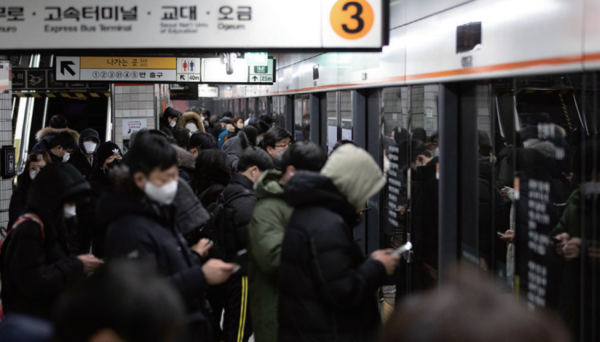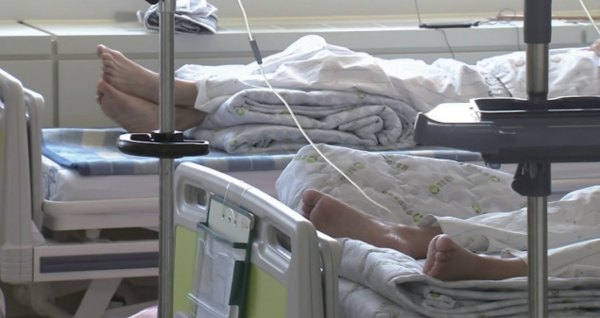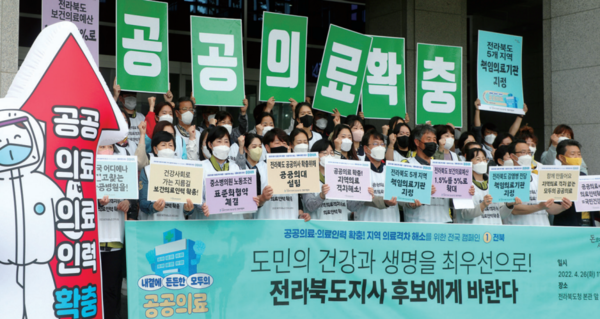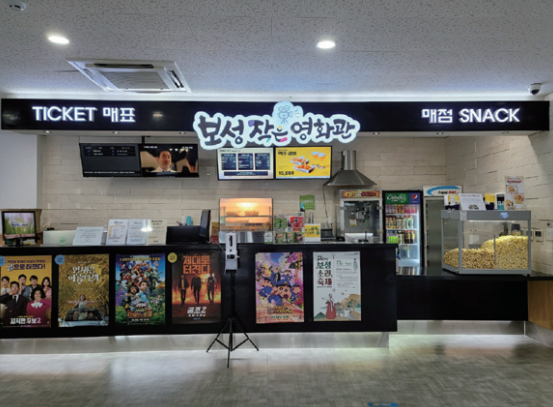The new phrase “Republic of Seoul” that is growing in popularity seems to reflect the severe regional imbalance in Korea. While spatial inequality has been consistently intensifying, the National Assembly opened the Regional Balanced Development Forum last January and initiated a debate among lawmakers regarding policies to dismantle the social issue. Reflecting on the active discourse for balanced national growth, the Sungkyun Times (SKT) will explore the concept, types, and possible solutions of regional imbalance.
What Is Regional Imbalance?
-The Concept of Regional Imbalance
Regional imbalance refers to the disparity of economic status, infrastructure, resources, and opportunities among several regions in a nation. Since the imbalance especially arises from the difference in economic statuses among regions, the contrast is most evident between the capital and non-capital areas and between urban and rural regions. The fundamental cause of regional imbalance is that industries cannot equally grow in every sub-national region. As regional imbalance generates disparities in quality of life and spatial inequality, it is recognized as a severe social issue. First, the discrepancy can trigger conflict among regions and ultimately hinder social integration by raising equity problems. Moreover, migration from low to high economic levels can create overpopulated and underpopulated areas, fueling further problems. Therefore, it is essential to have an acute understanding of the current situation as well as the systemic causes of regional imbalance, in order to seek practical solutions.
-The History of Regional Imbalance in Korea
Regional imbalance started developing in Korea in the 1960s when the government executed various industrial policies. During that era, the government implemented the Growth Pole Strategy – a method that invests in a specific region with high potential, to develop the region and its surrounding areas. Though this strategy contributed to national economic growth, it naturally excluded non-capital and rural areas. Accordingly, economic levels outside the capital and urban areas decreased, amplifying migration to the Seoul Capital Area (SCA). This formed a vicious cycle that further weakened the foundation of underdeveloped regions. According to a 2022 research carried out by Statistics Korea, the population of the SCA rapidly reached 50.3% of the entire population by 2021. The population gap between the SCA and non-capital regions continuously grew, settling regional imbalance as a chronic issue of Korean society that brings inequality to various aspects of life.

Types of Regional Imbalance
-Imbalance in Healthcare and Welfare
Disparities in quality of life begin with a regional imbalance in health. First and foremost, a sharp discrepancy of medical resources exists between regions. Statistics Korea’s 2022 study conveys that in 2021, the number of doctors in medical facilities per 1,000 people was 4.7 in Seoul, but lingered around 2 in non-capital provinces like Jeolla and Gyeongsang. This difference stems from the medical supply system in Korea in which the private medical resource suppliers prioritize regions that return high profits. Hence, resources such as hospital beds and medical personnel are widely distributed in the SCA with higher economic levels, leaving behind areas with poorer status. Regional imbalance also influences the domain of social welfare. Community Social Security Indicators of 2019 showed that Seoul had 5.4 local community facilities per 1,000 disabled individuals, while it was 2.5 in non-capital provinces. Regarding welfare for the elderly, the statistics further indicate that the number of practicians at senior welfare centers per 10,000 elders in Seoul was 12.8, compared to 8.2 in non-capital regions. Since welfare systems for the disabled and senior citizens directly impact their safety and health, regional imbalance in welfare intensifies health inequality problems. Apart from the disparity itself, the lack of objective standards to evaluate the welfare level worsens the situation.

-Imbalance in Education
urthermore, due to the regional difference in infrastructure status, imbalance exists in the education system as well. As shown in results of the National Assessment of Educational Achievement (NAEA) in 2021, the percentage of the average educational status per regional size in urban cities was 7.8-12.9% higher than in Eup and Myeon – the Korean administrative unit of town – rural regions. Such educational imbalance raises equity concerns in university admissions. “It is true that rural areas lack educational infrastructure,” said an anonymous student (Junior, Department of Hospitality, Kyunghee University) who graduated from a high school in an Eup region, “Many students leave to study in Seoul because public education in rural areas is not sufficient.” To alleviate this disparity, the government implemented the Special Admissions for Rural Students policy, a special screening process to ensure equal opportunities for students in rural areas with relatively poor learning environments. However, without the development of local universities outside the SCA, this policy can ironically contribute to the rural-urban migration of competent individuals and further worsen regional imbalance. Likewise, regional disparity influences higher education, causing many local universities to lose competence and face crisis. Jongno Hagwon’s 2023 research on Early College Admissions shows that the percentage of students who canceled their enrollment was 3% in SCA universities, while non-capital areas recorded a significantly higher percentage of 18.6%.

-Imbalance in Culture
Cultural distribution and consumption are also affected by regional imbalance. First, cultural facilities are heavily concentrated in the SCA due to the regional disparities in social infrastructure. According to 2020 research by the Ministry of Culture, Sports, and Tourism (MCST), the number of cultural facilities per province is about twice as high in the SCA than in non-capital regions. Spatial inequality also exists in terms of the accessibility of cultural facilities. Further analysis of 2020 statistics from the MCST done by the National Research Council shows that 96% of the population of Seoul City lives within a 1.5km radius from a library, while the population is only 50% in Jeollanam and Gyeongsangbug Provinces. To alleviate this cultural disparity and help each region to develop its own unique culture, the government enacted the Regional Culture Promotion Act in 2014. However, the law received criticism over its incompatibility to eradicate the firmly solidified cultural imbalance. The act attempted to create a legal basis to secure budgets for projects such as the “Cultural City.” Nonetheless, it could not stop the government from cutting the total funds for local authorities to work on regional development. Additionally, it did not specify the authority given to the municipalities, which prevented them from actively developing unique cultural features of each region.
For Balanced Growth
-Strengthening Local Healthcare and Welfare Systems
The government must primarily aim for the mass expansion of public healthcare to fix the biased distribution of medical resources. For a dramatic change, the expansion should exceed the current proportion of public hospital beds, which is now only 10% in Korea. According to the Second Basic Public Healthcare Plan, the country plans to build more than 20 local medical centers in regions without public hospitals and invest heavily in the existing ones. Hence, it is crucial to secure enough budget by acquiring separate investments for public healthcare expansion through discussion with the Ministry of Economy and Finance. In order to dismantle the regional disparity in the field of welfare, a unified standard to sharply diagnose each region’s welfare system is necessary. The federal government should organize a comprehensive set of standards to evaluate the types, distribution, accessibility, and labor force of welfare for each province. After the evaluation, the government should actively initiate institutional and economic interference in regions that do not meet certain areas’ standards. Based on these standards, local governments must also strive to enhance their regions’ welfare system by thoroughly inspecting welfare demands and blind spots.

-Ensuring Equal Opportunities in Education
To create an equal learning environment for all students across the nation, the federal and local governments must cooperate to enhance the current public education system. First, the state should establish a national minimum standard by specifying essential factors in public education and monitoring each region’s educational infrastructure. Meanwhile, the local governments must suffice with the established standards by enacting additional policies based on an extensive analysis of the region’s current status. Along with this long-term solution, the government should expand various investment projects to alleviate today’s pervasive educational inequity. The Ministry of Education must continue projects like the “Information and Communication Technology (ICT) Investment in Rural Areas” to grant equal learning opportunities. In a sense, the Special Admissions for Rural Students policy is necessary; however, to prevent the plan from increasing the out-flow of rural students, the government should simultaneously invest in the growth of local universities. Furthermore, administrative measures that financially support and improve the situation of local universities need to be developed. There should also be more funding for institutions that suffer from financial losses due to low enrollment rates. Through these efforts of advancing rural school facilities and curriculums, universities can strengthen their competencies.
-Building Cultural Diversity
Finally, the federal government should establish public cultural facilities outside the capital and distribute private facilities evenly across the nation. The local governments must also work for cultural development through various measures. Since there are limits to building huge cultural facilities in small regions, local governments can transform underused spaces into cultural facilities and launch various cultural programs with local businesses. For instance, remodeling under-used spaces into a small cinema, arranging entertaining programs, and promoting such projects can help them flourish. Furthermore, to successfully create cultural regions based on the Regional Culture Promotion Act, the federal government should expand the authority of local governments so they can form their cultural areas with unique regional identities. To financially support the plans of local governments, it is imperative to increase the budget through the federal government’s legal intervention. An official of the MCST introduced the Cultural City project as an ideal example and explained, “The current project involves a committee that selects the cities based on various criteria like budget arrangement, expected benefit, and resident participation. Then, the state financially supports the selected cities with the objective to reduce cultural disparity throughout the nation and fosters cultural diversity instead.” Another successful case of a cultural city is Jeonju, as it cultivated beautiful local culture through the branding of the Hanok Village.

Regional imbalance, a deeply ingrained problem in Korea, causes disparities in health, education, and culture depending on one’s residence. Neglecting this issue will reinforce social polarization and hamper national growth. Through a perceptive analysis of today’s reality and active discourse about tomorrow, the government and society must constantly search for an answer toward balanced and sustainable growth.
